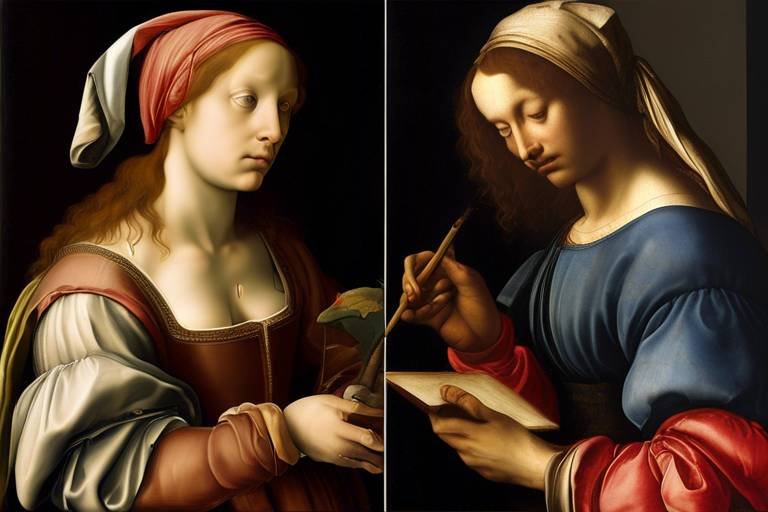The Aesthetic Principles of Traditional Japanese Art
Traditional Japanese art is deeply rooted in unique aesthetic principles that have shaped its distinctive identity over centuries. From the serene beauty of Wabi-Sabi to the harmonious concept of Ma and the refined elegance of Shibui, Japanese art forms embody a rich tapestry of cultural values and artistic expressions.
At the core of traditional Japanese art lies the philosophy of Wabi-Sabi, which celebrates imperfection, impermanence, and simplicity. Embracing the beauty of natural materials and the passage of time, Wabi-Sabi encourages an appreciation for the transient nature of existence, inviting viewers to find beauty in the imperfect and the ephemeral.
Another key aesthetic concept in Japanese art is Ma, the artful use of negative space to create a sense of balance, harmony, and rhythm. By emphasizing the significance of emptiness in design, Ma allows for a contemplative pause that enhances the overall composition, highlighting the relationship between objects and the space around them.
Kanso, the principle of simplicity and elimination of the non-essential, underscores the importance of clarity, purity, and minimalism in traditional Japanese art forms. By stripping away excess and clutter, Kanso evokes a sense of tranquility and mindfulness, guiding viewers towards a deeper appreciation of the essential elements within a work of art.
Yūgen, a concept that celebrates mystery and subtlety, invites viewers to delve into the hidden depths and profound meanings within artworks. By embracing the enigmatic and the subtle, Yūgen creates a sense of intrigue and contemplation, encouraging a deeper connection with the artistic experience.
Iki, with its chic and stylish elegance, embodies a sophisticated allure that blends refinement with simplicity. This concept in traditional Japanese art exudes understated sophistication, inviting viewers to appreciate the artistry of subtle details and the balance between sophistication and simplicity.
Shibui, known for its understated beauty and quiet refinement, values simplicity, subtle beauty, and timeless elegance. By emphasizing a restrained aesthetic, Shibui exudes a sense of sophistication that transcends trends, embodying a quiet grace that stands the test of time.
Jo-ha-kyū, the concept of gradual acceleration, infuses traditional Japanese art with a dynamic rhythm that builds anticipation, reaches a climax, and resolves with a sense of completion. This structural concept adds depth and movement to artistic expressions, creating a compelling narrative that engages the viewer's senses.
Enso, the Zen circle of enlightenment, symbolizes the cyclical nature of existence, strength, and wholeness in traditional Japanese art. Representing imperfection, impermanence, and the interconnectedness of all things, Enso embodies the essence of enlightenment and the eternal flow of life.
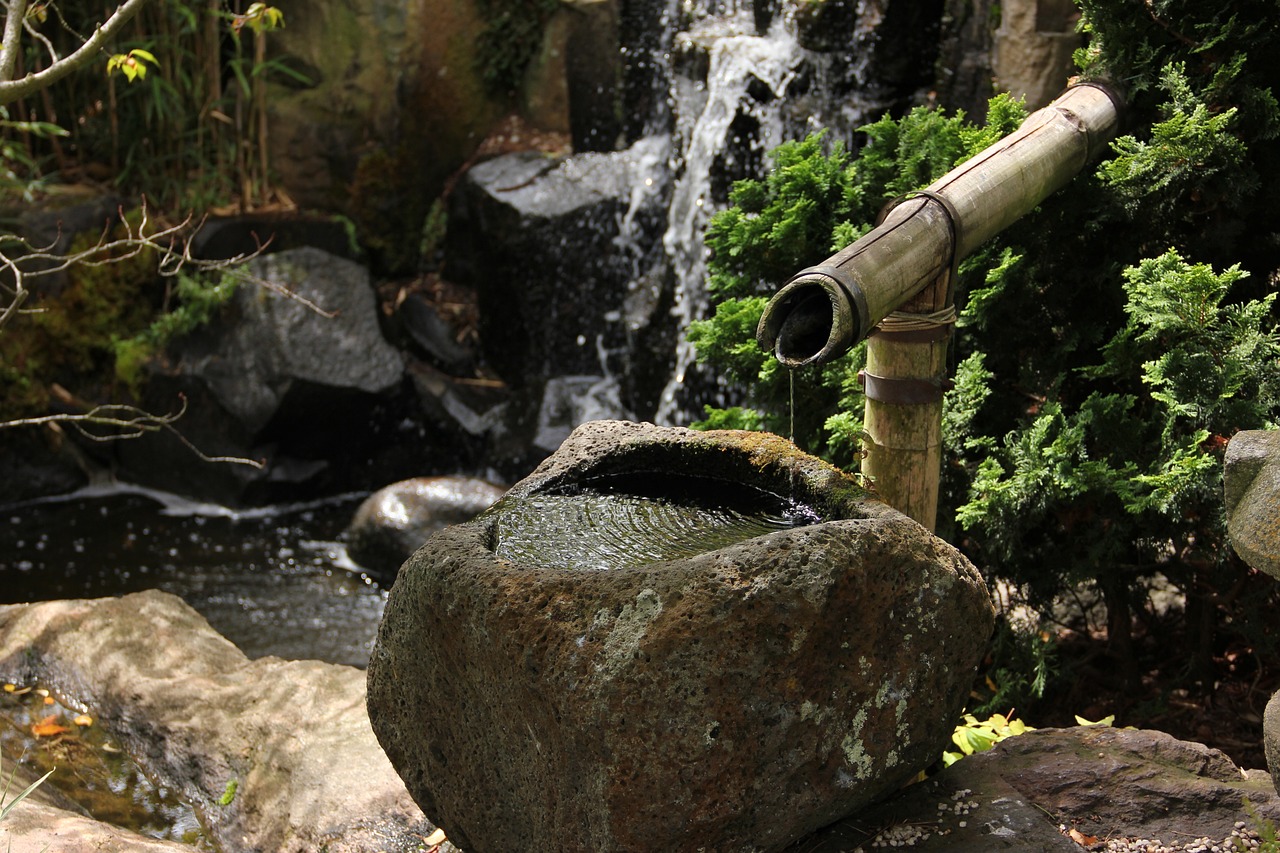
Wabi-Sabi Aesthetics
Wabi-Sabi aesthetics encapsulate the essence of beauty found in imperfection, impermanence, and simplicity. It is a profound concept deeply rooted in traditional Japanese art, emphasizing the value of the natural and the aged. Wabi-Sabi nurtures an appreciation for the transient nature of life, celebrating the beauty of things that are modest, humble, and unpretentious.
In Wabi-Sabi, there is a profound respect for the passage of time and the marks it leaves behind. It finds beauty in the weathered patina of an old wooden structure, the irregular shapes of handcrafted pottery, or the asymmetry in a carefully arranged flower arrangement. This aesthetic philosophy encourages us to find joy in the imperfect, to embrace the beauty of flaws, and to cherish the simplicity of the moment.
Imagine a cracked ceramic tea bowl, repaired with gold lacquer through the art of Kintsugi, becoming even more beautiful and valuable because of its imperfections. This exemplifies the Wabi-Sabi principle of finding beauty in the broken and the imperfect, turning flaws into unique features that tell a story of resilience and acceptance.
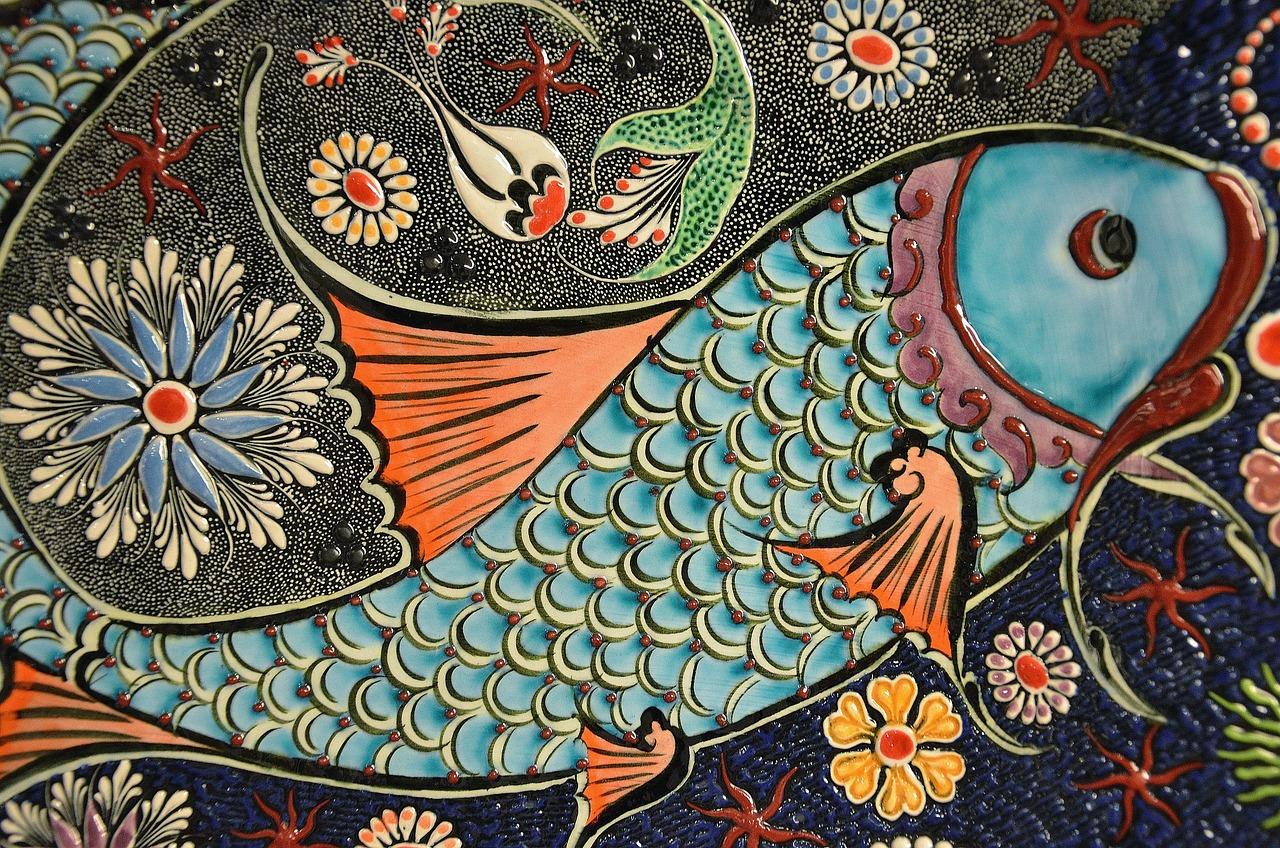
Ma: The Concept of Negative Space
The concept of Ma in traditional Japanese art focuses on the profound significance of negative space in artistic composition. Ma is not merely empty space but rather the dynamic interplay between objects and the void that surrounds them, emphasizing the importance of silence, emptiness, and pauses in creating a sense of harmony and balance.
When an artist incorporates Ma into their work, they allow the viewer's imagination to fill in the gaps, creating a sense of rhythm and flow that transcends the physical boundaries of the artwork. This deliberate use of negative space cultivates a deeper appreciation for the relationship between presence and absence, form and emptiness.
Imagine a painting where the sparse use of brushstrokes on a canvas creates a sense of openness and spaciousness, inviting contemplation and reflection. The intentional omission of details in traditional Japanese art allows for a profound exploration of the unseen, encouraging viewers to engage with the artwork on a spiritual and emotional level.
By embracing the concept of Ma, artists can evoke a sense of tranquility and serenity in their creations, guiding the viewer's gaze not only to what is present but also to what is absent. This emphasis on negative space underscores the beauty of simplicity and the power of restraint in conveying profound artistic expression.
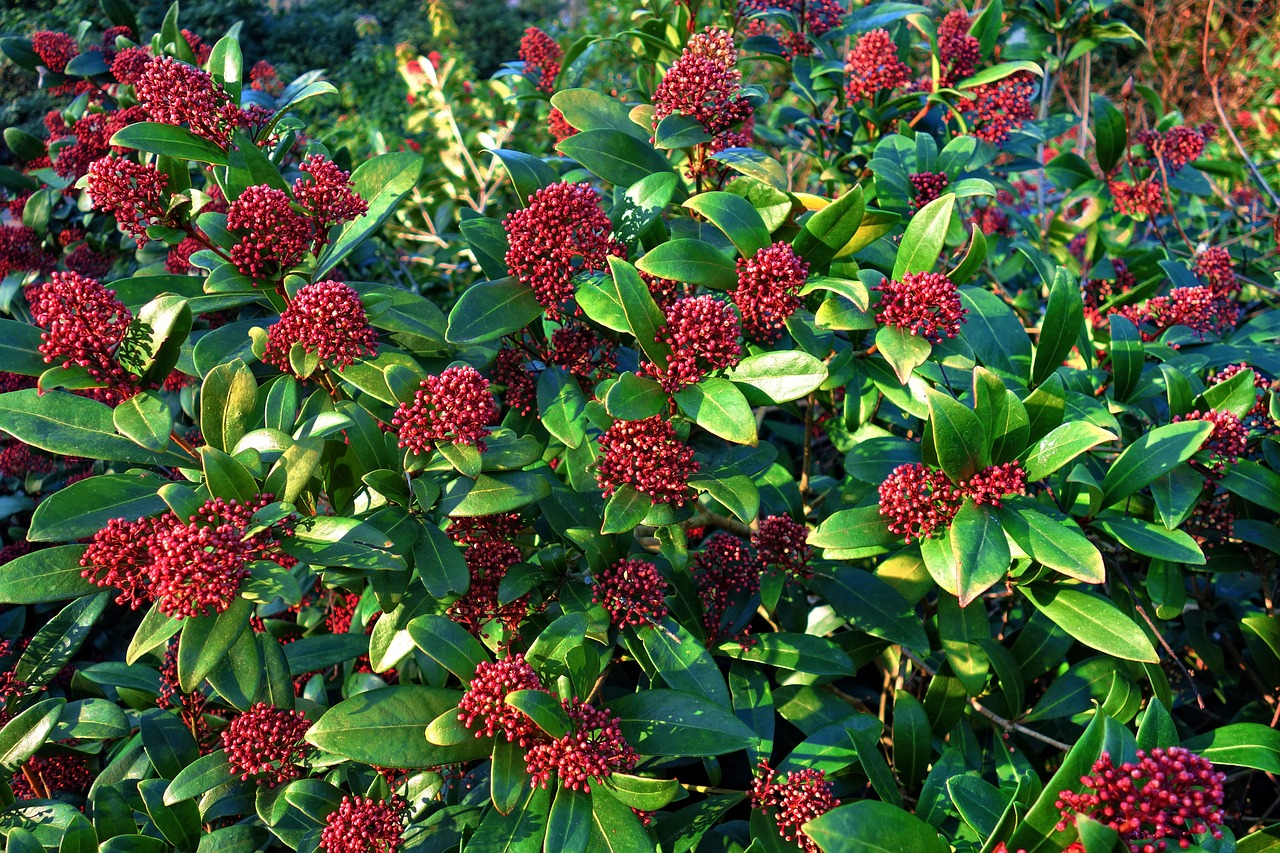
Kanso: Simplicity and Elimination of the Non-Essential
Exploring the fundamental aesthetic values and concepts that underpin traditional Japanese art forms, including Wabi-Sabi, Ma, and Kanso, providing insight into the unique artistic philosophy and techniques that have influenced Japanese art for centuries.
Kanso, a key principle in traditional Japanese art, revolves around the idea of simplicity and the removal of unnecessary elements to achieve clarity and minimalism. It emphasizes purity and a sense of tranquility by eliminating clutter and focusing on the essential aspects of design. In Kanso, every element serves a purpose, contributing to a harmonious composition that evokes a feeling of mindfulness and peacefulness.
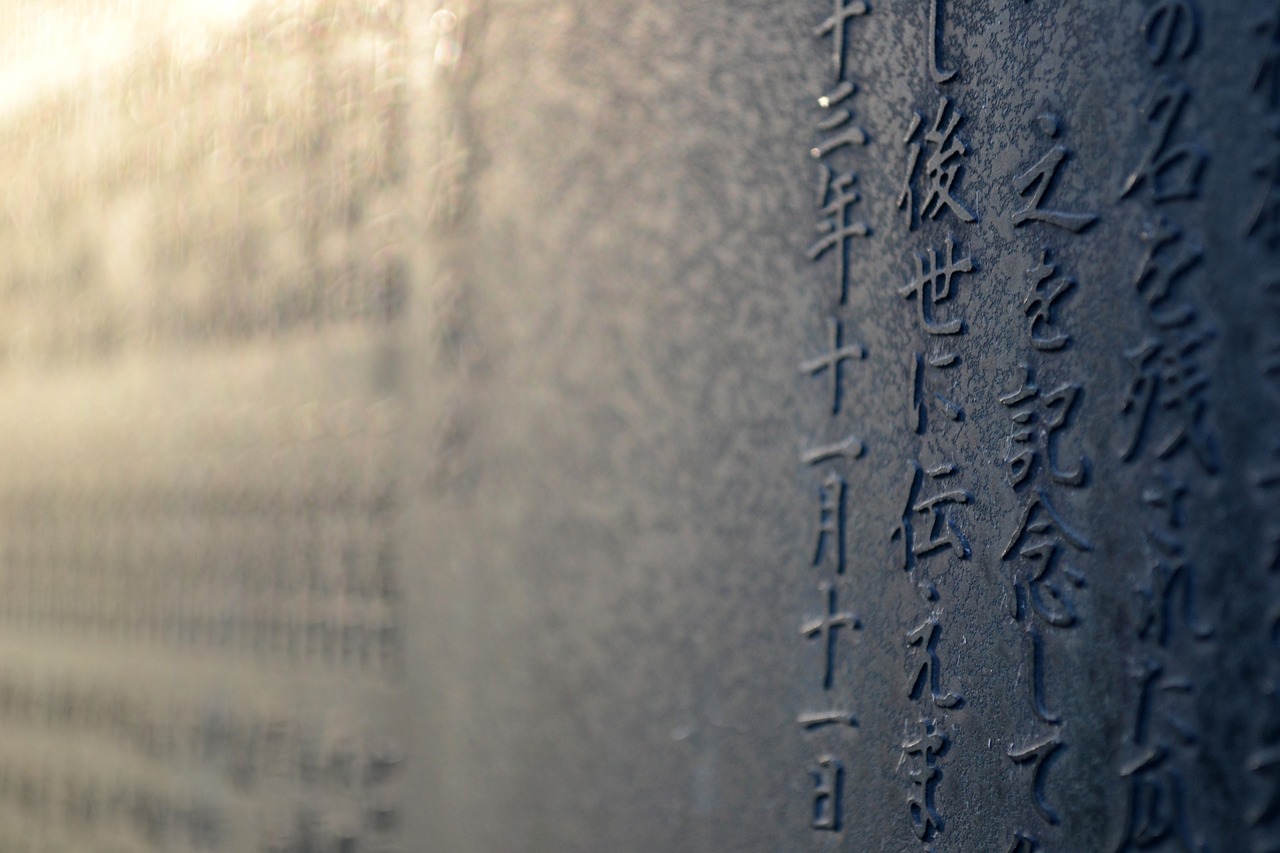
Yūgen: Mystery and Subtlety
Exploring the fundamental aesthetic values and concepts that underpin traditional Japanese art forms, including Wabi-Sabi, Ma, and Kanso, providing insight into the unique artistic philosophy and techniques that have influenced Japanese art for centuries.
Yūgen, a profound aesthetic concept in traditional Japanese art, delves into the enigmatic beauty that celebrates the mysterious and the subtle. It invites viewers to contemplate the hidden depths and profound meanings within artworks, creating a sense of intrigue and wonder. The essence of Yūgen lies in its ability to evoke emotions beyond words, transcending the boundaries of the visible and the known.
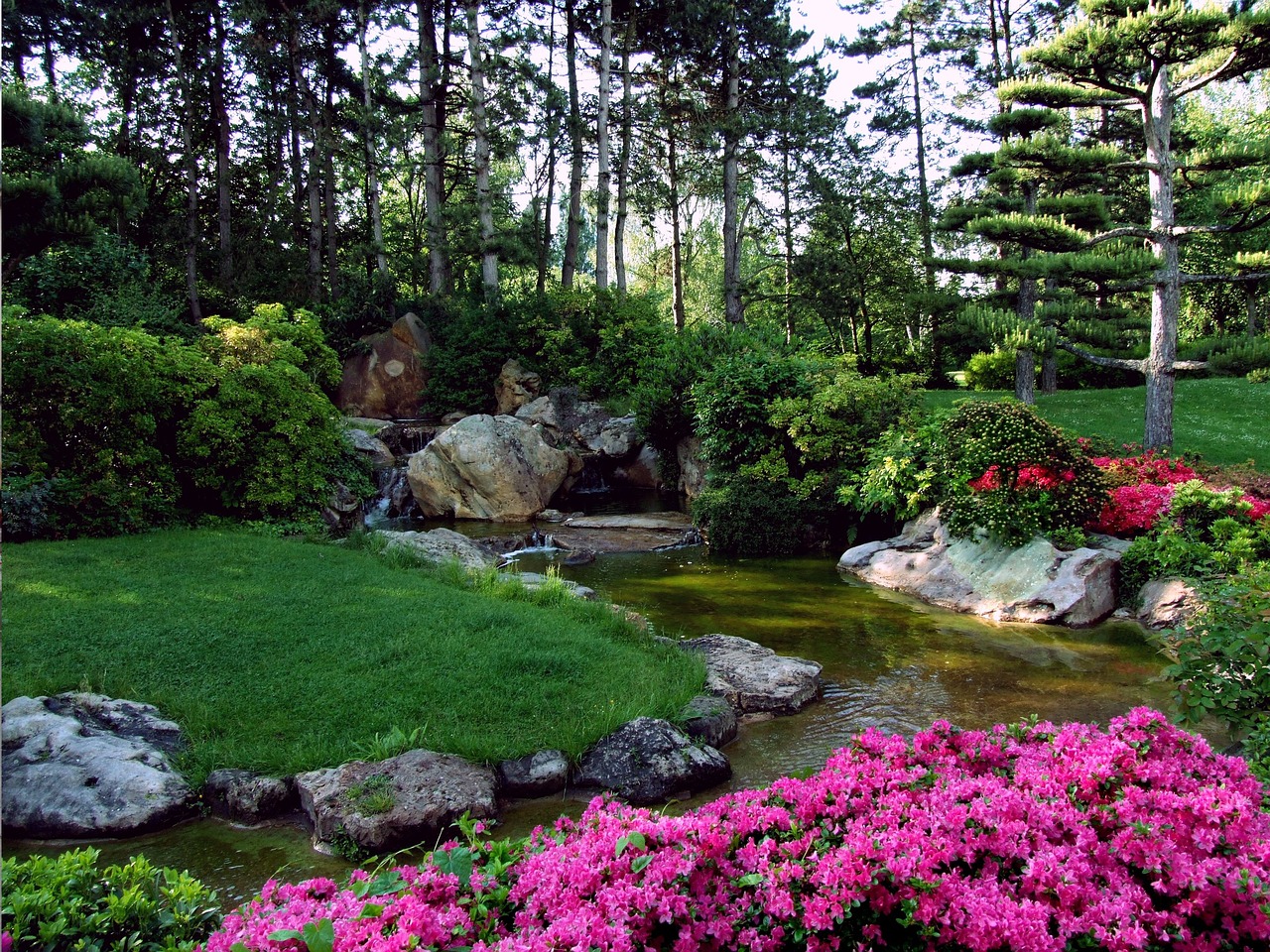
Iki: Chic and Stylish Elegance
Iki is a captivating concept in traditional Japanese art that embodies a unique blend of chic and stylish elegance. It is a reflection of sophistication and refinement, where simplicity meets aesthetic sophistication. Imagine a piece of artwork that exudes an understated charm, drawing you in with its refined beauty and subtle allure.
In the realm of Iki, less is more. The emphasis lies on the intricate details, the careful selection of elements, and the artful balance between refinement and simplicity. It is about creating a sense of understated sophistication that speaks volumes without being loud or ostentatious.
Picture a serene landscape painting where every brushstroke is deliberate, every color choice intentional, and every empty space purposeful. This is the essence of Iki – a harmonious blend of chic elegance and artistic grace that captivates the viewer's eye and soul.
Just like a well-curated piece of art, Iki is about striking the perfect balance between sophistication and simplicity. It is about finding beauty in the minimalistic, the refined, and the effortlessly stylish. In a world filled with noise and clutter, Iki stands out as a beacon of quiet sophistication and timeless elegance.
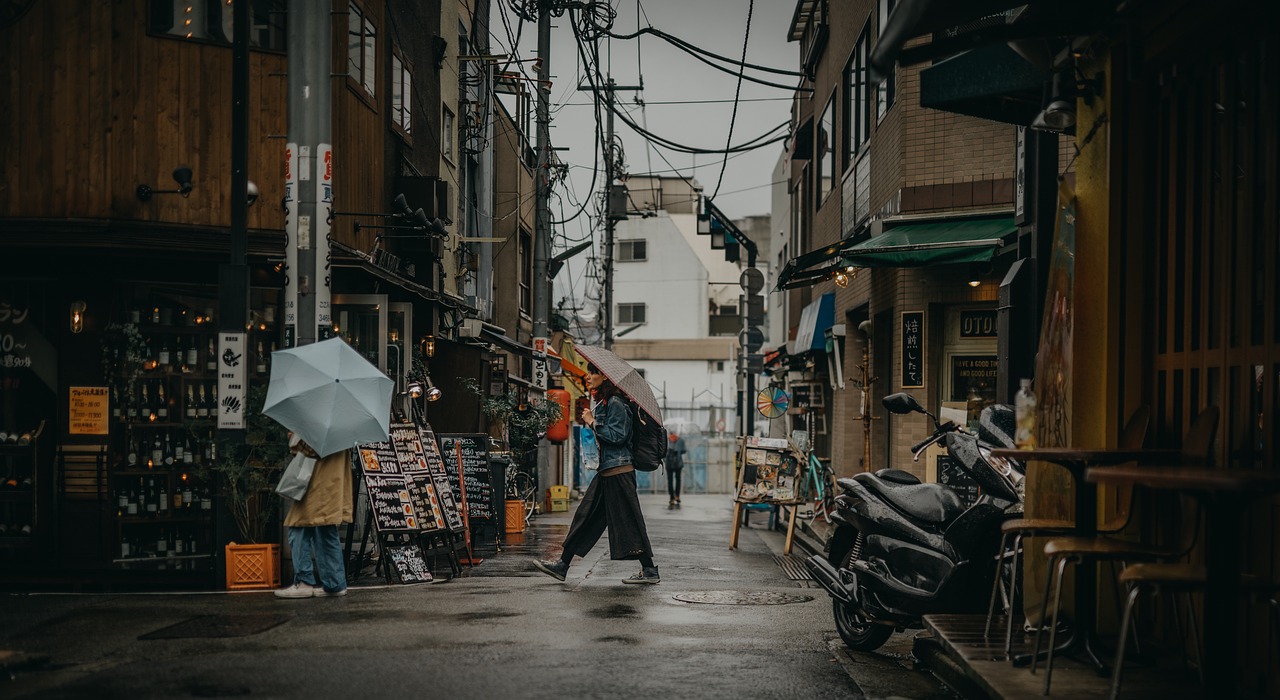
Shibui: Understated Beauty and Quiet Refinement
Shibui is a concept in traditional Japanese art that embodies the essence of understated beauty and quiet refinement. It values simplicity, subtle elegance, and a sense of quiet sophistication that is both timeless and captivating. The term "Shibui" refers to a restrained aesthetic that exudes a sense of maturity and sophistication, focusing on the beauty found in simplicity and the elegance of understatement.
When it comes to Shibui, less is often more. This principle emphasizes the importance of restraint and the elimination of the unnecessary, allowing the true beauty of an object or artwork to shine through without being overshadowed by excessive ornamentation or embellishments. In Shibui, every element serves a purpose, contributing to the overall harmony and balance of the piece.
Quiet refinement is at the core of Shibui aesthetics, inviting viewers to appreciate the subtle details and nuanced craftsmanship that define traditional Japanese art. This concept values authenticity and natural materials, celebrating the inherent beauty of imperfection and the passage of time. By embracing simplicity and modesty, Shibui art exudes a sense of tranquility and understated elegance that resonates deeply with those who appreciate the art of subtlety.
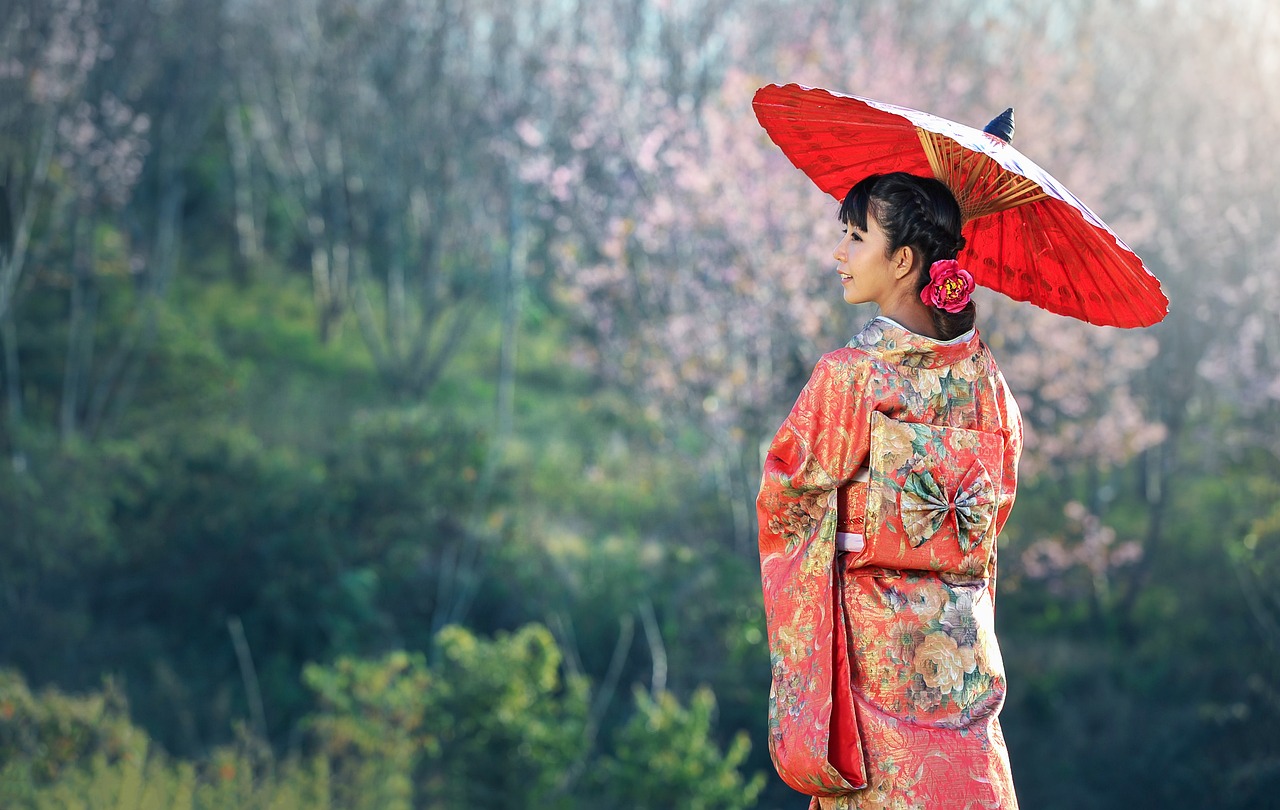
Jo-ha-kyū: The Concept of Gradual Acceleration
Jo-ha-kyū is a captivating concept deeply rooted in traditional Japanese art, offering a unique perspective on the rhythmic progression of artistic expression. The essence of Jo-ha-kyū lies in the gradual acceleration of tempo or intensity, guiding the audience through a carefully crafted journey of anticipation, climax, and resolution. Imagine a musical composition building up slowly, reaching a crescendo, and then gracefully coming to a harmonious conclusion, captivating the listeners with its dynamic evolution.
This concept is not limited to music but extends to various art forms, including traditional Japanese theater, tea ceremonies, and even martial arts. It embodies the idea of gradual development and evolution, mirroring the natural flow of life itself. Just like the changing seasons or the ebb and flow of the tide, Jo-ha-kyū encapsulates the beauty of gradual progression and the inherent sense of balance it brings to artistic performances.
When applied in artistic expression, Jo-ha-kyū allows for a nuanced exploration of tension and release, creating a sense of depth and emotional resonance within the audience. It invites viewers to immerse themselves in the unfolding narrative, experiencing the journey as much as the destination. The deliberate pacing and rhythm inherent in Jo-ha-kyū add layers of complexity and intrigue to traditional Japanese art forms, elevating them to a profound level of aesthetic sophistication.
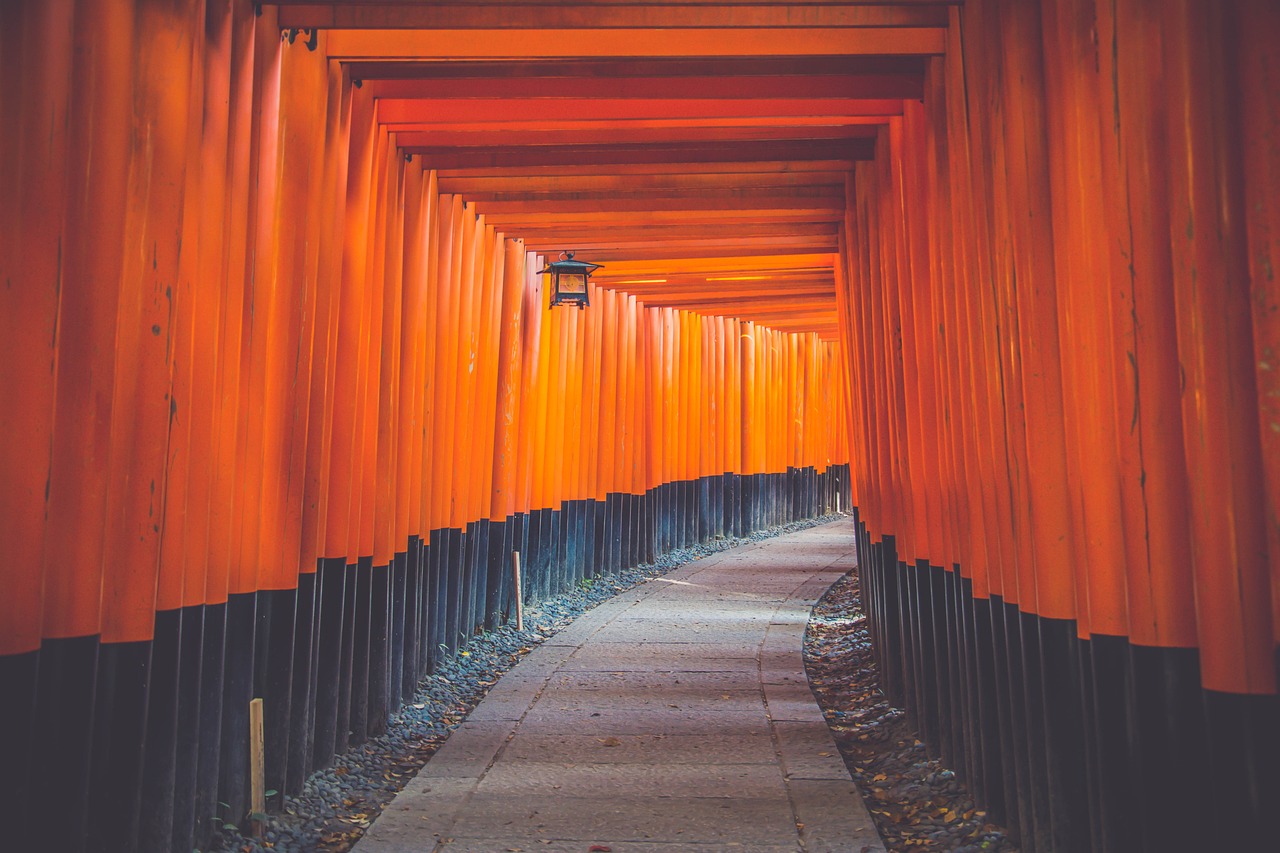
Enso: The Zen Circle of Enlightenment
The concept of Enso, known as the Zen Circle of Enlightenment in traditional Japanese art, holds profound symbolic significance. The Enso is a simple, yet powerful symbol represented by a circle drawn in a single brushstroke, typically in black ink. This circle symbolizes enlightenment, strength, and the cyclical nature of the universe in Zen Buddhism. It embodies the idea of imperfection, impermanence, and wholeness, reflecting the interconnectedness of all things.
When creating an Enso, the artist aims to capture the essence of the moment and their state of mind without hesitation or overthinking. The circle is often left open or incomplete, symbolizing the imperfections inherent in life and the continuous journey towards enlightenment. The brushstroke itself is a reflection of the artist's inner self and their connection to the universe, emphasizing the beauty of simplicity and spontaneity.
In Zen philosophy, the Enso represents the void, the infinite, and the cyclical nature of existence. It signifies the idea of letting go of the ego and embracing the flow of life without resistance. The circle's fluidity and continuity reflect the ever-changing nature of reality and the interconnectedness of all beings. It encourages contemplation, mindfulness, and the acceptance of the present moment in its purest form.
Frequently Asked Questions
- What is the significance of Wabi-Sabi in traditional Japanese art?
Wabi-Sabi is a fundamental aesthetic principle that celebrates imperfection, impermanence, and simplicity in art. It values the beauty of natural and aged elements, fostering an appreciation for the transient nature of life.
- How does the concept of Ma contribute to traditional Japanese aesthetics?
Ma focuses on the importance of empty space in design and art, creating harmony, balance, and rhythm. It emphasizes the artful use of voids to enhance the overall aesthetic experience.
- What does Kanso represent in traditional Japanese art forms?
Kanso is the principle of simplicity and the elimination of clutter in design. It highlights clarity, purity, and minimalism to evoke tranquility and mindfulness in artistic expression.
- What is the essence of Yūgen in traditional Japanese art?
Yūgen celebrates mystery and subtlety in art, inviting viewers to contemplate hidden depths and profound meanings within artworks. It embodies a sense of enigmatic beauty and intrigue.
- How is Iki defined in the context of traditional Japanese art?
Iki represents chic and stylish elegance, blending refinement with simplicity to create understated sophistication. It embodies a sense of aesthetic sophistication and allure.
- What characterizes the principle of Shibui in traditional Japanese art?
Shibui values understated beauty, subtle elegance, and quiet refinement in art. It emphasizes simplicity and sophistication, exuding a timeless and sophisticated aesthetic.
- What does Jo-ha-kyū signify in traditional Japanese artistic expression?
Jo-ha-kyū is a structural concept involving a gradual acceleration of tempo or intensity in art. It creates a dynamic rhythm, leading to anticipation, climax, and resolution in artistic performances.
- What is the symbolic meaning of Enso in traditional Japanese art?
Enso is a circular symbol representing enlightenment, strength, and the cyclical nature of the universe. It embodies imperfection, impermanence, and wholeness, reflecting profound philosophical concepts.

















